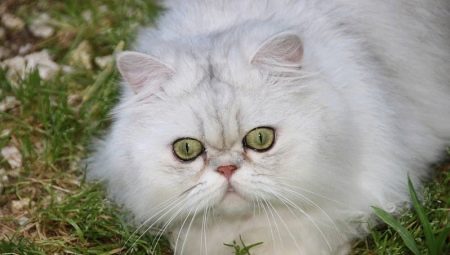Chinchillas, thanks to their charming face, huge sad eyes and thick fur look like plush toys. However, by nature they are real aristocrats, and excessive grip and other "calf tenderness" are alien to this breed. Affectionate and smart chinchillas themselves come to the owner when they need affection. The rest of the time, they imposingly relax in a comfortable chair or on a soft couch.
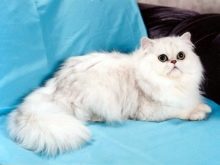
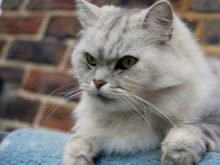
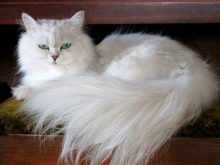
Origin history
Chinchilla cats belong to one of the oldest breeds, and therefore can boast excellent health and a stable psyche. England is considered the country of their appearance, although scientists from other European countries also participated in the breeding process.
The breed was finally formed at the end of the XIX century, but the standard was adopted only in 1980. The first mention of the breed dates back to the year 1890, when a kitten of unusual color was born in a Persian cat. The baby was named Sheen, his mother was a Persian cat, and his father was a smoky Briton. An unusual baby attracted the attention of breeders, and experiments began on breeding similar kittens.
For the implementation of the plan, the crossing of British and Persian individuals began. The result was the appearance of a breed with long iridescent wool. First, kittens with dark hair appeared, their color resembling blue-gray British. However, then individuals with a light pearl-silver hue were hatched.

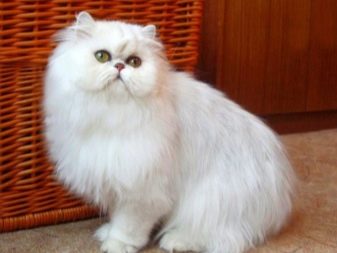
However, kittens have not received kittens from the first offspring of Tires (or there is no official data about this). The first officially registered chinchilla specimen were kittens born as a result of mating a Betta cat with a smoky male.The cat was given the nickname Silver Lambkin (1889) and began to consider him the ancestor of the chinchilla breed.
Difficulties touched the shade of the eyes of the animal. When mixing Persian chinchillas with classic Persians or silver British kittens with yellowish eyes were born. But after introducing the green-eyed tabby into the pedigree, the kittens got bright green eyes.
At first, only a chinchilla individual with silver (blue) fur was considered thoroughbred. A little later, on the basis of a stabilized silver cat, a golden variety was bred. In 1980, this type of chinchilla was also recognized as a breed standard.
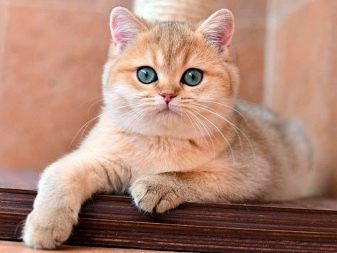
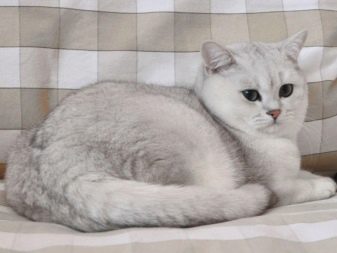
Representatives of the breed owe their name to Princess Victoria (granddaughter of the Queen of Great Britain), who became interested in the unusual appearance and kind nature of animals. With her light hand, the breed received this name. Several loyal pussies lived in her palace at once.
Today, disputes over the origin of chinchillas do not subside - some consider these cats to be one breed, while others call them just a long-haired species of Persians.


Description
Individuals of the chinchilla breed visually seem quite large, but this is only because of the voluminous wool. The average weight for males is 7 kg, for females - 5 kg. The animal has a strong, but soft body shape. The chest of chinchillas is quite wide, the back of healthy individuals is straight and even.
The body is held by powerful and rather short paws with rounded pads. Bunches of fur usually stick out between the latter.
The head has a round shape, it is medium in size with a rather pronounced chin. The nose is small, flattened. The ears are also small in size, covered with thick fur from the inside, and if the individual is long-haired, then there are brushes.
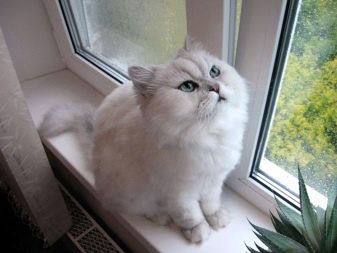
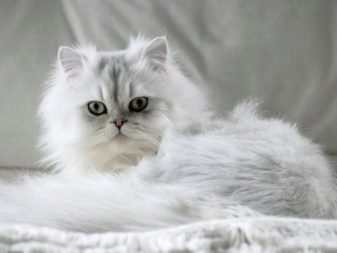
The tail is the true pride of chinchillas. It is short, rather thick and covered with fluffy hair all over its length. Its length is on average 1-1.5 cm longer than the hair on the whole body. Because of this, it is worth the cat raise its tail - and it seems as if it is fanned by a real volume fan.
The characteristics of the breed necessarily include a description of the eyes. Large and expressive, they invariably attract attention. They have an unusual shape - round, slightly elongated in the corners and lowered. This gives the chinchillas a slightly sad and resentful appearance. As a rule, chinchilla eyes are bright green, although there are individuals with gray-blue eyes.
Cats have a long and thick coat with undercoat. The amazing flickering effect of a fur coat is due to the color of the animal. At the base, closer to the body, the hairs have a lighter shade, gradually darkening to the tips.
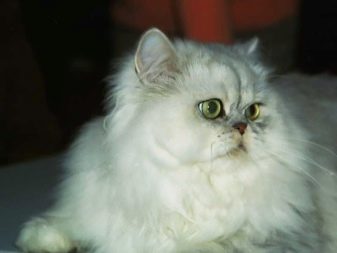
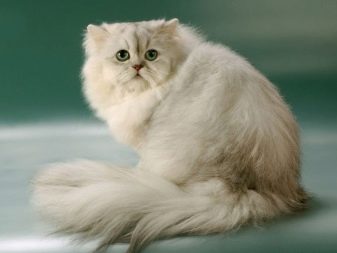
Character Features
Chinchilla cats can be called noble aristocrats. They have a soft, flexible character, become attached to the owner and get along with the children - they endure, even if they pull their tails. But whenever possible they try to retire from the nursery as soon as possible. Left alone, the animal will prefer special toys, rather than master furniture.
As already mentioned, cats are human oriented, and therefore require increased attention to their person. Their favorite place is on the owner’s lap. Loneliness is contraindicated for representatives of this breed - they experience stress, yearn for, and may even get sick. At the same time, chinchillas are self-sufficient and do not like to invade their personal space. If the cat does not want to be touched and stroked at the moment, she will make it clear.
The guests in the house are treated quite friendly, trustingly go together, let themselves be ironed. They get along well with other pets, but they prefer neutrality to friendship.
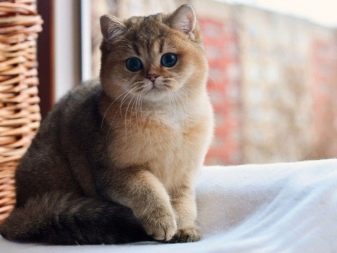
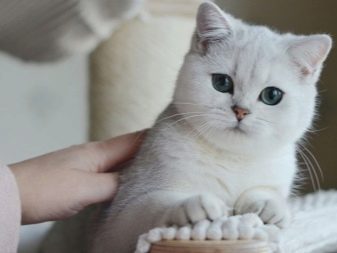
As kittens, animals can spend hours playing games, running after toys or rustling a candy wrapper. However, as they grow older, cats play less and less, as if demonstrating that they are representatives of the royal breed. The adult cat prefers games to bliss in some warm and soft place. At the same time, it is important to play with the pet, since a sedentary lifestyle is a direct path to obesity and disease.
Representatives of the breed are distinguished by their delicate character and ingenuity. Cats are clean, easy to learn. The owners also note that chinchillas are big talk lovers. They respond to affection with numerous purrs, can meow to the owner when they are bored, or something worries them. The usual "meow" and "moore" in their "vocabulary" has many intonations.

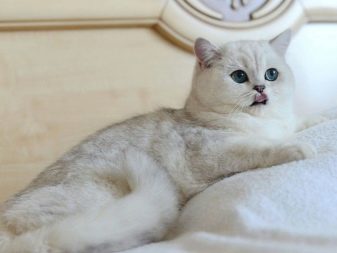
How many cats live?
Chinchillas live on average 12-15 years. Life expectancy depends primarily on genetic characteristics, lack of disease and care.
It should be remembered that these individuals are prone to fullness, which can shorten their life. That is why it is important to monitor the pet’s nutrition and provide it with fairly long-term activity.
About diseases characteristic of the breed will be discussed below. It is fair to say that, in general, chinchillas have quite good health.
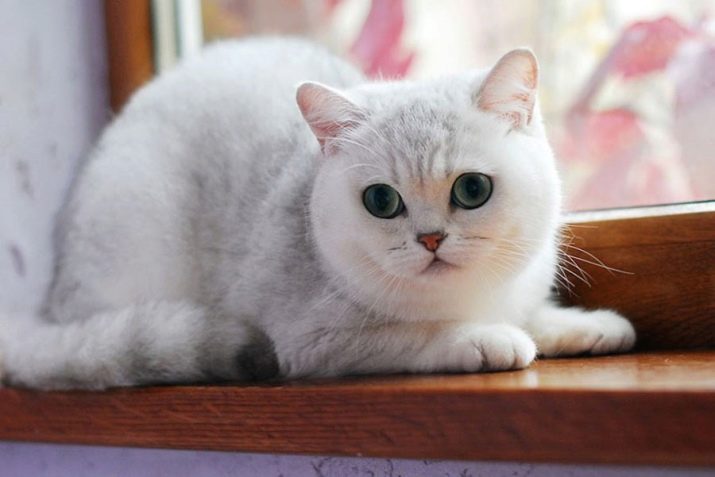
Kinds
Representatives of the breed went a long way of development before the breeders managed to breed pets with unusual, and most importantly, resistant fur in the offspring. Today there are 3 varieties of chinchillas.
Silver
The classic color for this breed. Ticking all over the body. The coat has a thick undercoat. Almost the entire length of the hair is white and only at the tip of 1/8 part is black. This provides a beautiful shimmering silver tint. Black ticking is more pronounced on the tips of the paws, back and tail, which creates the feeling that a veil was thrown onto the animal.
The cat has dark paw pads, always contrasting. The mirror of the nose, eyes and mucous membranes have a soft black stroke, as if they were painted on with a cosmetic pencil.
This species is a subspecies of chinchilla point. The latter has a lighter shade of hairs and undercoat, because of which the pet's fur coat looks snowy white. From the silver look, she got an amazing pearl shimmer.
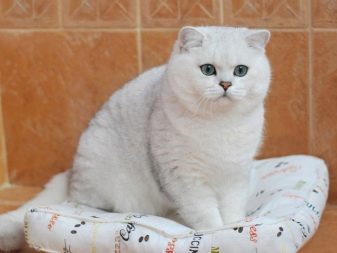

Silver shaded
The remaining hair is already 1/3 dyed black, which is why this look looks darker than silver. Given that the undercoat of the animal is snowy white, and black ticking is amplified on the legs and tail, it seems that the pet has like blurry stripes. In this case, the darker areas gently flow into the lighter areas. As such, the shaded variety does not have strips. Between the fingers they have dark hair.
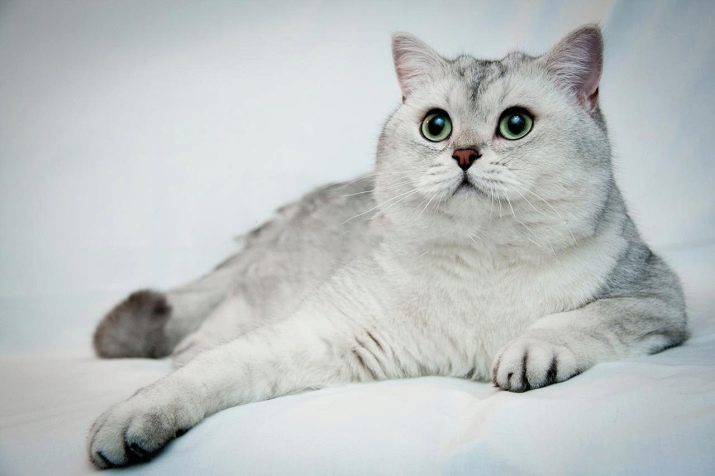
Gold
This species appeared relatively recently. Cats have a peach-honey shade of a fur coat, and black ticking prevails on the sides and on the tip of the tail, so it seems that the cat is enveloped in a light haze. Sometimes the undercoat can be a bright peach color, and the ticking at the tip of the coat can be blue. It is also considered a breed standard. The main thing is that the overall color of the cat is uniform - without spots and stripes.
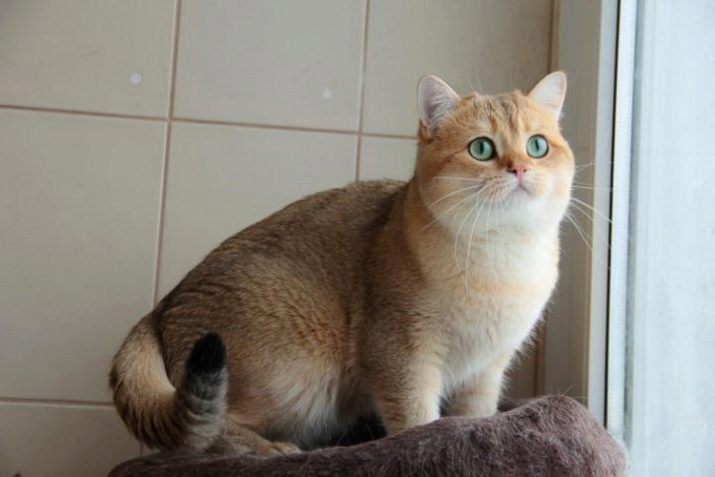
Today, the breed is not considered fully formed, so new varieties appear - marble, chocolate (brown). The differences are based on the difference in shade of the ends of the cat’s hair. They can be more silver (blue), peach, cream.
Most kittens in the first 2-3 months have a pronounced tabby color (stripes), however, as they grow older, the shade shades more and more, becoming uniform.
Defects include the presence of white spots on the chest (the so-called "medallions"). For a variety, colorpoint is also the white color of the fingers. Such a cat is only blue-eyed; deviation from this standard is considered a marriage.
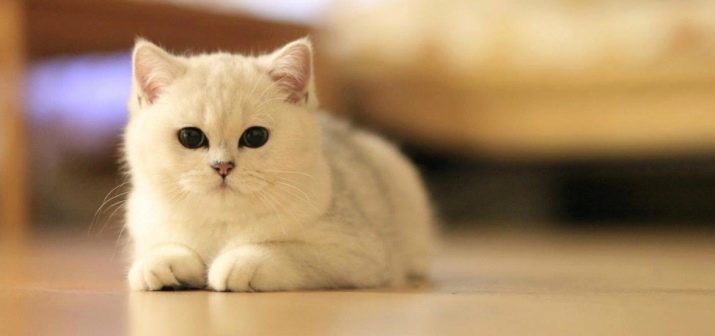
Depending on belonging to a particular breed, chinchilla cats can be of several types.
- British chinchilla. In Russia, these cats are simply known as "British", and the cat is also known as English. The classic representative of chinchilla.
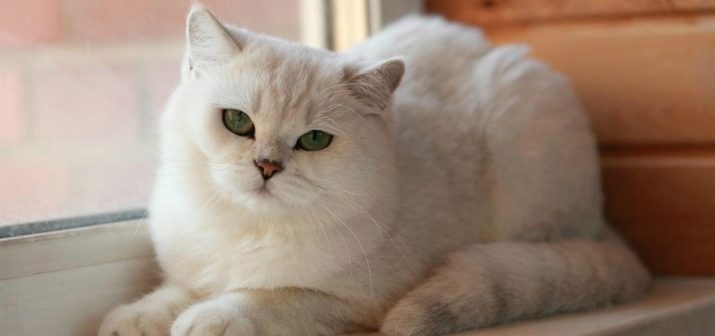
- Scottish Shorthair Chinchilla. These cats are also called plush - for their very thick, pleasant to the touch and short fur.Scottish cats can be erect and fold.
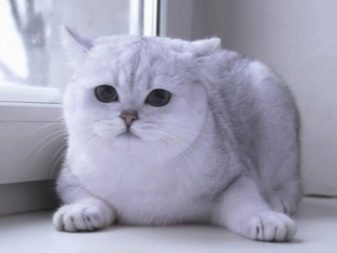
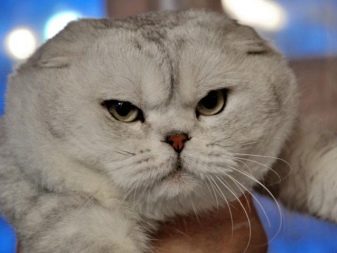
- Persian chinchilla. Another classic representative of his breed. The owner of the longest and fluffy fur of all chinchillas.
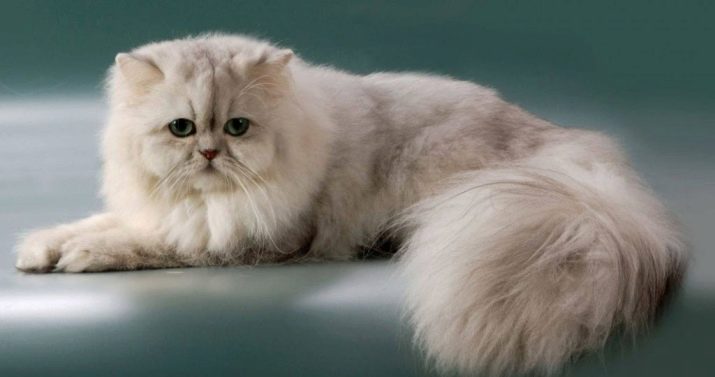
Conditions of detention
Long and fluffy cat fur requires everyday care. You need to comb it at least once a day, it is permissible to do this once every 2 days. Otherwise, no warlocks can be avoided. First, the animal is combed according to the growth of hair, then against.
On the muzzle and cheeks, the hair is combed towards the face, that is, against hair growth. Do not worry that the animal will behave uneasily during these manipulations. Chinchillas love to be combed. Even against wool.
Like most cats, chinchillas are small bathing enthusiasts. In addition, from frequent bathing, their fur may turn yellow. Avoid this by using a special whitening shampoo. A cat should be bathed no more than once every six months, while one should be prepared for the inappropriate behavior of the pet. It is important to ensure that water and shampoo foam do not get into the eyes and ears of the cat.
After water procedures, you need to wrap it in a warm towel and let it dry a little in this form. You can dry the pet’s fur with a hairdryer by setting the warm air mode. Combing wet hair is undesirable.
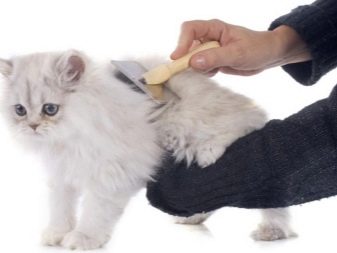
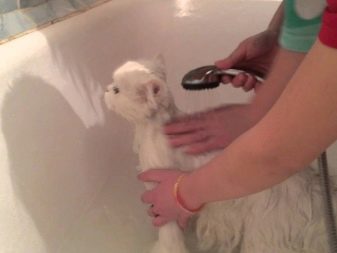
During combing and daily examination of the cat's body, pay attention to the fur between the fingertips. It can also be combed out, if necessary - cut. Otherwise, the wool in these places will stray into a lump, rubbing delicate pads.
An alternative to water and washing can be the use of dry shampoo. It does not require rinsing with water, but simply combed out of the wool. First you need to comb the fur coat, and then rub dry granules into the fur. After a while, the fur is combed out again. Apply dry shampoo every 14-17 days. From this, the animal’s hair will become fluffy, shiny, excess fat and pollution will be removed.
If the animal’s paws or face are dirty, you don’t need to wash it, just wipe it with water.
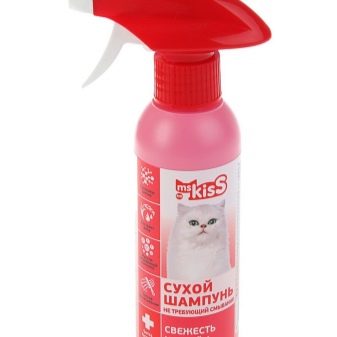

There is no need for special care behind the ears, it is enough to clean them with cotton wool once a week or less, as they become dirty. Only the visible part of the ear is cleaned. Trying to penetrate deeper, especially with a cotton swab, is dangerous for the animal.
But for the eyes of cats, as well as for hair, constant care is required. The fact is that individuals of this breed are prone to increased lacrimation, so you need to wipe your eyes every day with a soft damp cloth or a damp cotton pad.
Another kitten should be accustomed to the chinchilla to the claw point, and at the same time once a week to trim the claws with special tools. Only one third of the claw needs to be cut, but if you cut most of it, the blood vessels passing in this part of the claw will be damaged.
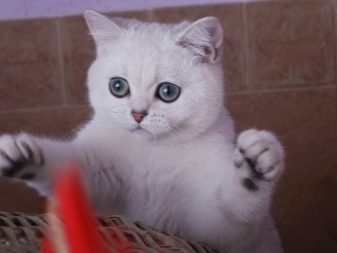
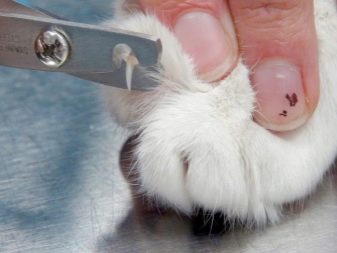
As for walks, they are pleasant for the animal, but not necessary. If you live in a private house, then you can let a cat out for a walk in the garden. Naturally, making sure that he was not in danger there, and also putting on him an antiparasitic collar. In the city of a pet it is better to walk on a harness.
It is important to keep the tray clean by regularly changing its contents. The filler is acceptable to use any that is convenient for you. If you follow these simple rules, then the house will not have an unpleasant odor, and the animal does not spoil outside its toilet.
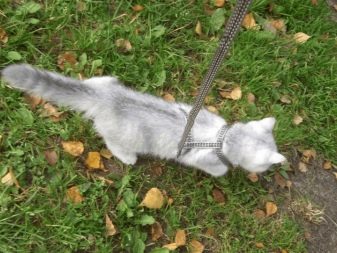
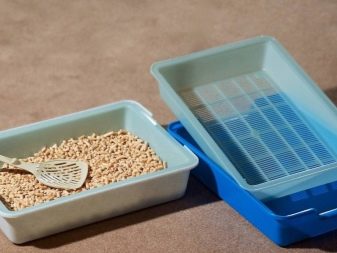
What to feed?
This breed of cats, like any other, can be fed according to one of two nutrition schemes:
- natural food;
- pet food.
In this case, you can not mix different types of food, until the end of life, if possible, adhere to the selected diet.
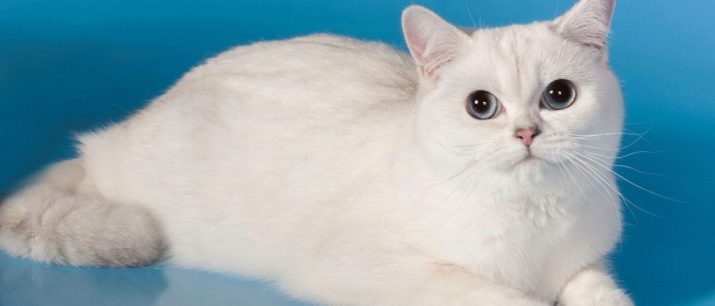
If we talk about home / natural food, then the diet should include a number of essential products.
- Meat - rabbit, turkey, chicken, sometimes other types of meat. It should be finely chopped and raw.You can pre-freeze meat (for 10-12 hours), and then scald the pieces with boiling water. This will disinfect them.
- Fish - It is enough to include marine fish (and only it) in the diet of a furry pet 1-2 times a week. Fish can only be given boiled.
- Dairy products also give no more than 1-2 times a week. It is better if it is low-fat cottage cheese, sour cream, fermented baked milk.
From time to time, boiled carrots or chopped cabbage can be added to the diet of chinchillas. However, a particular cat may not tolerate vegetables. If the animal is underweight, it is worth giving it bran or buckwheat porridge boiled in water once or twice a week.
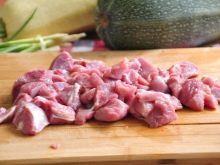

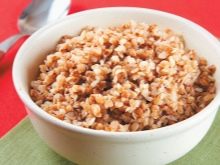
If it is decided to feed the cat with zoo feed, then it is better to entrust his choice to the veterinarian. He will recommend specific brands and types, taking into account the age, weight and characteristics of the animal’s health.
Adults of this breed are fed 2-3 times a day, kittens - 5-6 times a day. Due to the unusual structure of the jaw, chinchillas are not able to gnaw large pieces of food, so the food needs to be chopped.
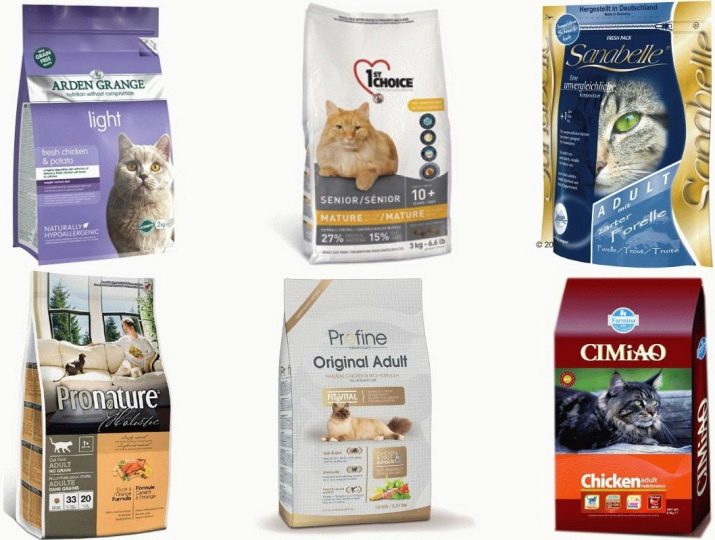
Before participating in exhibitions, for 10-14 days, it is recommended to feed the animal with food for kittens. The latter is enriched with proteins and minerals, which is why the hair of the animal will be especially shiny and silky. Some products can cause a change in color and deterioration of the fur of the animal, these include:
- egg yolks;
- milk;
- brightly colored fruits and vegetables;
- butter.
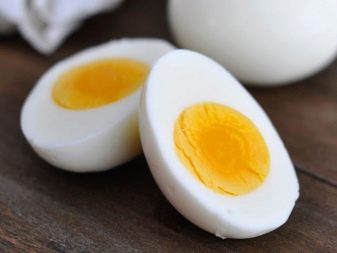
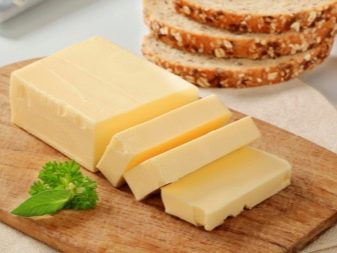
It is important to control the vitamin-mineral composition of chinchilla food. So, with an excess of vitamin A in the body, a darkening of the animal's hair is observed. Vitamin deficiency also negatively affects the health and appearance of the individual.
When eating homemade food, you should definitely include vitamin and mineral supplements in the fluff diet. If the animal eats food, then there is no need for this, since zoo feed is enriched with everything necessary. In the winter-spring period it is useful to give the cat a special grass. It is better to grow it yourself and periodically "walk" the cat on the windowsill. Let the pet pick itself the necessary amount of grass.
If it is decided to feed the animal with finished food, preference should be given to dry products of premium or super premium class. Today in stores you can find feeds designed specifically for cats of Persian and British breeds. For chinchillas, these are suitable. Calculation of the daily dose of food is carried out according to the formula - 70 kg of food is required per 1 kg of cat weight.
Animals should not be given fatty foods, sausages and sausages, river fish, raw sea fish, canned food, smoked meats, sweets. It is important that the pet's bowl always has clean, fresh water.


Breeding
Breeding chinchillas is not an easy task even for experienced breeders. This process is a kind of alchemy, the main difficulty is obtaining a stable characteristic color.
If you do not plan to take part in exhibitions, then a pair for a chinchilla can be selected from Persians or British, having a golden or silver color.
If performances are planned, then only a purebred chinchilla with an ideal pedigree and fully meeting the standard can become an animal partner. In this case, it is better to pick up a pair by contacting experienced breeders.
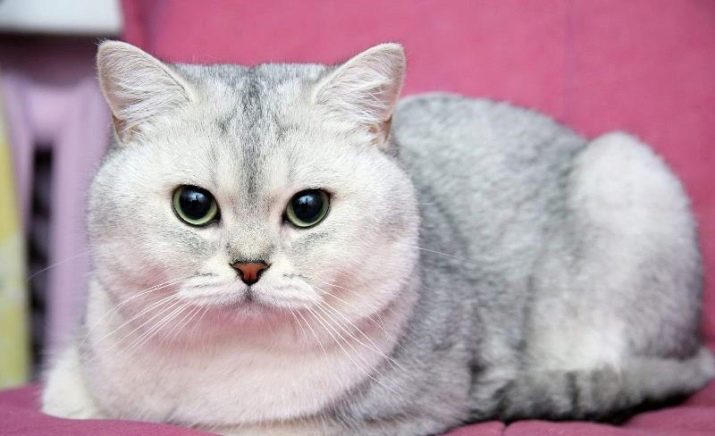
Mating can begin after the first estrus, usually an animal aged 1.5 years. As for the frequency of mating, opinions were divided. Someone thinks that mating can be done every estrus. However, experienced breeders recall that estrus can begin as early as 4-5 days after delivery. If there is a cat nearby at this moment, it can be dangerous for newborn kittens. The optimal period between mating, according to these breeders, is 4 months.
Before mating, you should visit a veterinarian, make sure there are no hidden diseases, and also gobble the animal.
The evidence of a successful mating is the calm, relaxed state of the cat.She begins to sleep more, in young cats (up to 3 years), the nipples swell and turn pink. A month after mating, the cat’s tummy is rounded. Pregnancy lasts 9 weeks.
After this time, kittens are born. If they have a pedigree, then after 1.5 months you should contact a specialized club. There, the kids will be examined and issued passports. This will allow the sale of pedigree kittens and participate with them in future exhibitions. Giving or selling kittens is better not earlier than three months. Until this time, the "baby" should be next to mom - This is one of the guarantees of adult immunity and a strong psyche of the individual in the future.
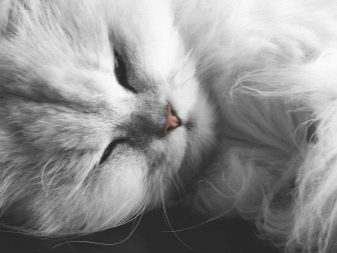
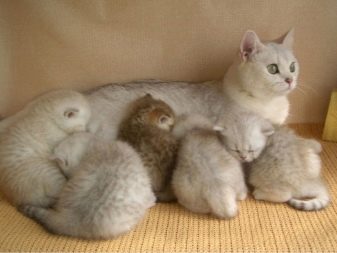
If you do not plan to “nurse” the offspring, you should take care of castration and sterilization of the animal. There is a misconception that castration is for cats, and sterilization is for cats. This is not true.
Castration is an operation to remove the gonads. Cats have testes, and cats have ovaries. By sterilization is meant a more gentle procedure. Males are ligated with the vas deferens, and females with the fallopian tubes. During sterilization, the animal does not lose sexual desire, but they cannot have offspring.
The optimal time for carrying out these manipulations is from 6 to 12 months. The influence of sex hormones in this period of life is not yet expressed, but at the same time they are sufficiently formed to remove.
After the operation, it is forbidden to feed the animal for the first 6-12 hours (in order to avoid vomiting dangerous during this period), only water can be given. After returning from the veterinary clinic, the cat should be placed in a warm place, on a flat surface. The animal must not be placed on a raised platform because disorientation is observed after anesthesia. The pet may fall and be injured. As a rule, cats recover as early as the next day after surgery; cats wear a blanket protecting the stitches for several days.

Health
The health of the animal consists of two factors - heredity and features of care. By nature, chinchillas got a fairly strong immunity, however, the breed still has characteristic diseases.
Polycystic kidney disease
With this pathology, the renal parenchyma is replaced by cysts. They put pressure on the organ, because of which the functionality of the kidneys decreases, nephritis and nephrosis occur. To determine the disease at the initial stage is almost impossible. Polycystosis is diagnosed when the cysts are already large, bring pain, and the cat’s stomach increases in size.
If the cysts are well palpated, unfortunately, it is no longer possible to save the cat - the kidneys actually stop working, and instead of the kidney tissue, cysts. At this stage of the animal’s life, they either euthanize or keep a certain diet and give the cat medicine to ease its suffering.
Initial treatment usually involves surgical intervention - the cyst is cut off within healthy tissues.


Hypertrophic cardiopathy
With this pathology, the walls of the ventricle of the heart muscle thicken. This provokes heart failure, thromboembolism and even sudden cardiac arrest of the animal. Diagnose an ailment is possible only with the help of ultrasound. A signal to the need for it can be shortness of breath and fatigue of the pet.
Treatment involves the introduction of beta-blockers, ACE inhibitors, Diltiazem. The sooner treatment is started, the more likely it is to save the animal.
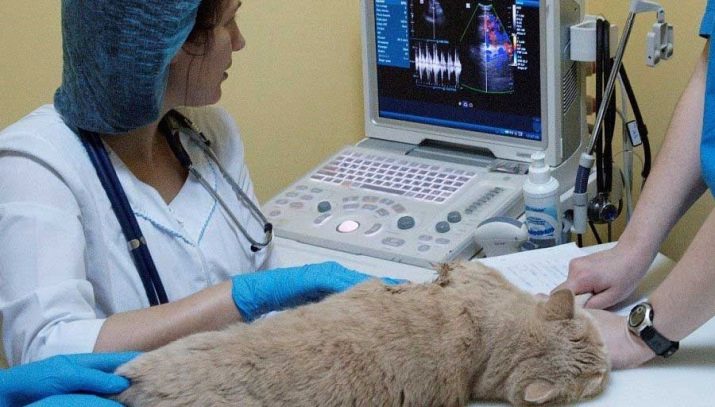
Retinal atrophy
The disease is the death of photosensitive receptors located on the surface of the retina. Alarming signs of the disease are night blindness (decreased visual acuity at dusk and dark), very dilated pupils, increased eye gloss. With a mild form, the animal begins to see poorly in the dark, while a heavy one threatens the individual with complete blindness. Effective treatment at the moment does not exist.
In general, the eyes are a weak spot of this breed due to increased lacrimation.It is important to wipe the animal's eyes every day with wet wipes (use special ones, without alcohol and perfumes) or with a damp cotton pad.
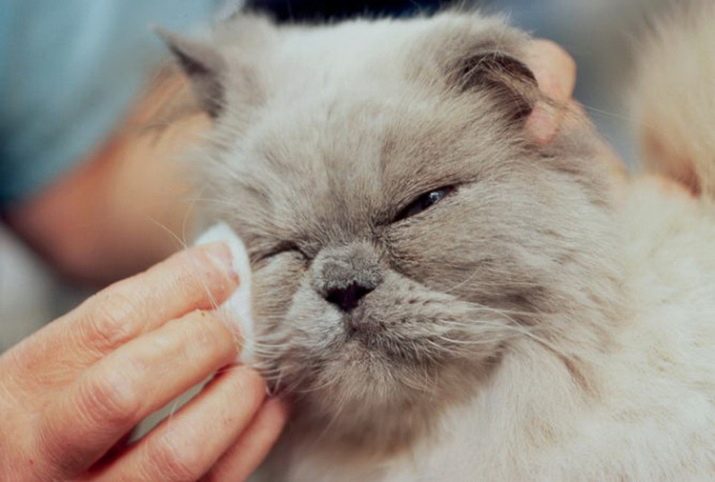
It is important to follow the vaccination schedule. Representatives of this breed are vaccinated against the following diseases:
- rabies;
- rhinotracheitis;
- cat plague;
- calcivirosis.
After the first injection, revaccination should be in 2.5-3 months. Then vaccinations are given once a year. As a rule, the veterinarian himself selects the appropriate drug. In most cases, they use "Nobivak", "Trikat" and "Quadricat" as the compounds most favorably tolerated by the animal.
It is important to remember that the injection begins to “work” only 10 days after vaccination.
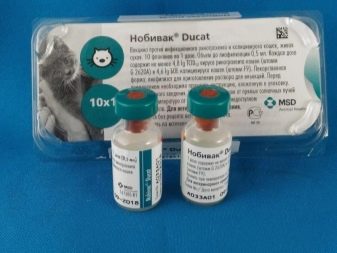
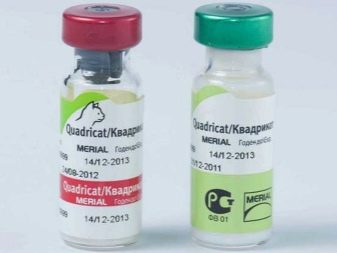
About the British chinchilla, see the next video.
